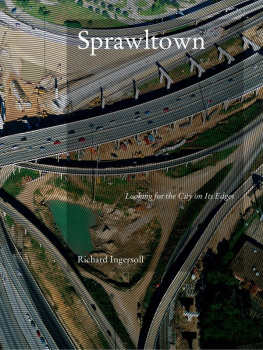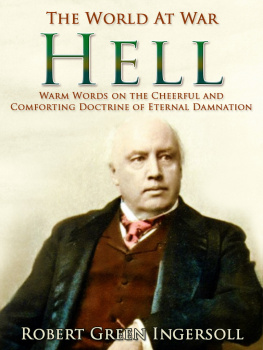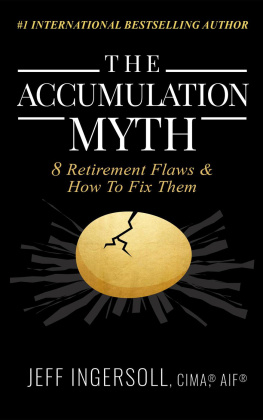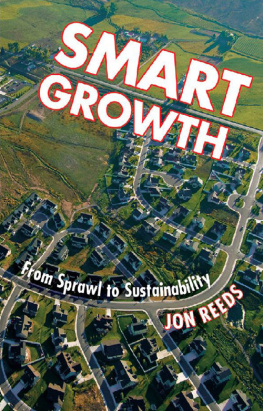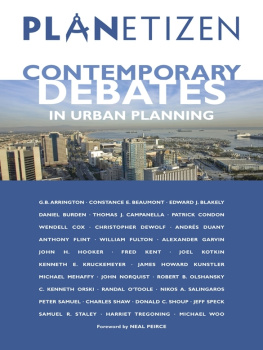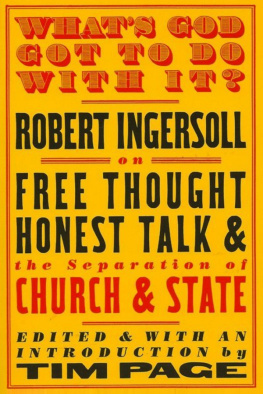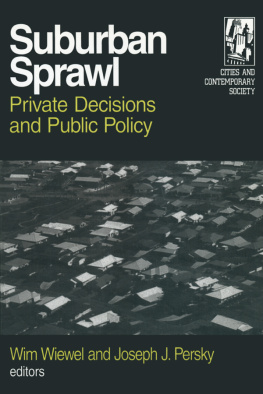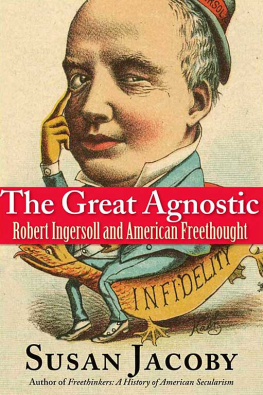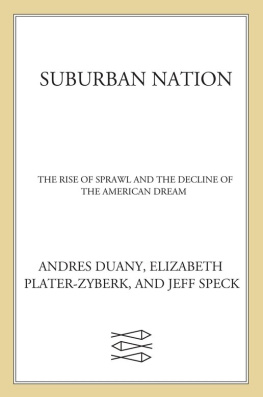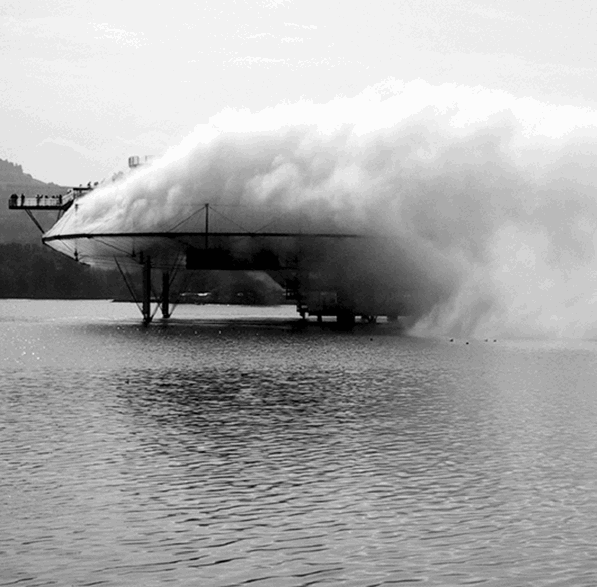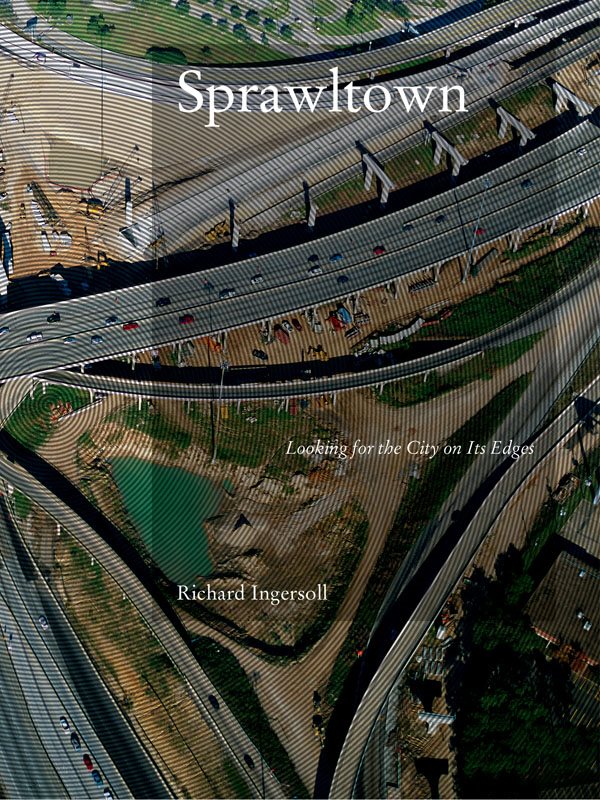
Sprawltown
Sprawltown
Looking for the City on its Edges
Richard Ingersoll
Princeton Architectural Press, New York
Published by
Princeton Architectural Press
37 East Seventh Street
New York, New York 10003
For a free catalog of books, call 1.800.722.6657.
Visit our web site at www.papress.com.
2006 Princeton Architectural Press
All rights reserved
Printed and bound in Canada by Friesens
09 08 07 06 4 3 2 1 First edition
No part of this book may be used or reproduced in any manner without written permission from the publisher, except in the context of reviews.
Every reasonable attempt has been made to identify owners of copyright. Errors or omissions will be corrected in subsequent editions.
Editor: Jennifer N. Thompson
Designer print edition: Deb Wood
Editorial assistance: Lauren Neefe, Lauren Nelson
Special thanks to: Nettie Aljian, Dorothy Ball, Nicola Bednarek, Janet Behning, Becca Casbon, Penny (Yuen Pik) Chu, Russell Fernandez, Jan Haux, Clare Jacobson, Mark Lamster, Nancy Eklund Later, Linda Lee, Katharine Myers, Lauren Nelson, Scott Tennent, Paul Wagner and Joseph Weston of Princeton Architectural Press Kevin C. Lippert, publisher
Library of Congress Cataloging-in-Publication Data
Ingersoll, Richard.
Sprawltown : looking for the city on its edges / Richard Ingersoll.
p. cm.
ISBN-13: 978-1-56898-566-4 (pbk. : alk. paper)
ISBN 978-1-61689-020-9 (digital)
1. Cities and townsGrowth. 2. City planning. 3. Regional planning. 4. Urban ecology. I. Title: Looking for the city on its edges. II. Title.
HT371.I547 2006
307.76dc22
2005026157
Sprawltown
Looking for the City on its Edges
Sprawltown was conceived between Houston, Texasthe mother of all sprawland Montevarchi, a small town in Italy. During the period that I was teaching at Rice University, between 1986 and 1997, I also acquired a house in Montevarchi, Italy, where I spent most of my free time. The obvious contrasts and the unexpected similarities between these two places provoked many of the theoretical and historical reflections about urban form and city life that I developed in magazine articles and university courses over the past two decades.
The first essay, , explains the difficulty of understanding and describing the universal condition of sprawl, which has become as much a way of life as a form of urbanism. Sprawl has a certain degree of inevitability due to the incremental growth of populations and the invincible models of consumer culture, and the environmental problems that have grown with it are legion. There is an urgent need to understand urban form and city life through new metaphors in the hopes of recognizing new possibilities of civic value and environmental beauty that can act as the mirrors of human dignity.
consumer services for the good of urban vitality and as the self-perpetuating means of security.
In , I claim that the contemporary urban forms that appear scattered and awkward are not as alienating as they might seem if one considers the new codes of perception introduced by the cinematic jumpcut. Driving a car is somewhat like editing a film. What is missing is the sense of narrative, which is the designers task.
The new scale of infrastructure imposed by the needs of automobiles has led to an uncanny type of beauty that is not often recognized. In , I review the possibilities of finding the beauty in elements such as freeway overpasses and link this to the aesthetic of the sublime in 20 th century avant-garde visual culture.
The final chapter, is an invitation to consider that the environmental apocalypse, signaled in the discovery of the Ozone holes, Chernobyl, melting polar icecaps, and a myriad of daily climatic instabilities, has already occurred. Rather than being conditioned by guilt-trips or yielding to new forms of eco-fascism, we should rather assume the attitude of cancer patients seeking a way for prolonging life in an agreeable form. No single strategy is sufficient in terms of changing the patterns of resource use and waste of advanced consumer society. In this transitional moment, every act of design should offer new options toward renewable resources. And no technical solution should be conceived outside of a social frame.
Each of the essays is furnished with emblematic illustrations and a series of proactive suggestions based on recent architectural and urban experiences. There can be no pat solutions, nor standard models, only cumulative strategies for rendering the universal condition of Sprawltown more sustainable, civically minded, and beautiful.
Note of thanks
I tried to be comprehensive and objective, but as the great essayist Michel de Montaigne (1580), would have said: I am the subject of this book. By that I do not mean to imply that my life is so terribly interesting, but rather that I have reached an understanding of things through traveling to places and talking to people. Among my colleagues at Rice were Anderson Todd, Lars Lerup, John Casbarian, Carlos Jimenez, Albert Pope, Sanford Kwinter, Elizabeth Gamard, and Spencer Parsons, and my assistants, Jay Powell, Andrew Cruse, and Larry Albert. Most importantly, Rice introduced me to Stephen Fox, who made the English version of this book more graceful. For five years I served on the board of editors for the Italian magazine Casabella, and in its pages I developed many of these essays. This editorial adventure was guided by Vittorio Gregotti, and assisted by Antonio Angellilo, Bruno Pedretti, Pierre-Alain Croset, Miriam Tosoni, and above all Sebastiano Brandolini, who made the Italian version of this book presentable. I am also grateful to Luis Fernandez Galiano and Adela Garcia, of the Madrid magazine Arquitectura Viva, where I also was given free reign to write about contemporary urban architecture. Kurt Forster, who in the late 1990s was director of the Canadian Centre for Architecture in Montral, invited me to organize an exhibition on toy trains, which was important to some of my reflections about infrastructure. Vittorio Magnago Lampugnani invited me to teach a survey in urban history for a year at the ETH in Zurich, which was quite useful for putting my thoughts into a historical perspective. Most of the contents of this book are the basis of a course in urban design that I have developed since 1998 at the Facolt di Architettura in Ferrara, Italy, where I arrived under the auspices of Paolo Ceccarelli. Maurizio Bonizzi and Nicola Janucci, have been invaluable in developing some of these materials. Since leaving Rice, I have had the good fortune to teach for Syracuse University in Florence, under the leadership of Barbara Deimling and Alick McLean. Others whose work and conversations have been of great influence include Piero Orlandi, Gabriele Basilico, Stefano Boeri, Mirko Zardini, Yung Ho Chang, Paolo Scrivano, Pippo Ciorra, Marco Massa, Massimo Carmassi, Margaret Crawford, Marco Cenzatti, Cathy Lang Ho, Vittorio Savi, Bernardo Secchi, Paola Vigan, Christophe Girot, Mauro Aurigi e Marco Adriano Perletti. To the late Marco Della Lena, founder of Meltemi publishing house in Rome, I owe the most thanks, since it was due to his insistence that I put the book together. Jennifer Thompson at Princeton Architecture Press has done a superb job in coordinating the English version of the book.
Sprawltown is in some ways the story of my own sprawl to many different places. My wife, Paola Nepi, who is unable to travel, has been the greatest source of wisdom in making sense of what I describe, and to her, my greatest critic, I dedicate the book.

